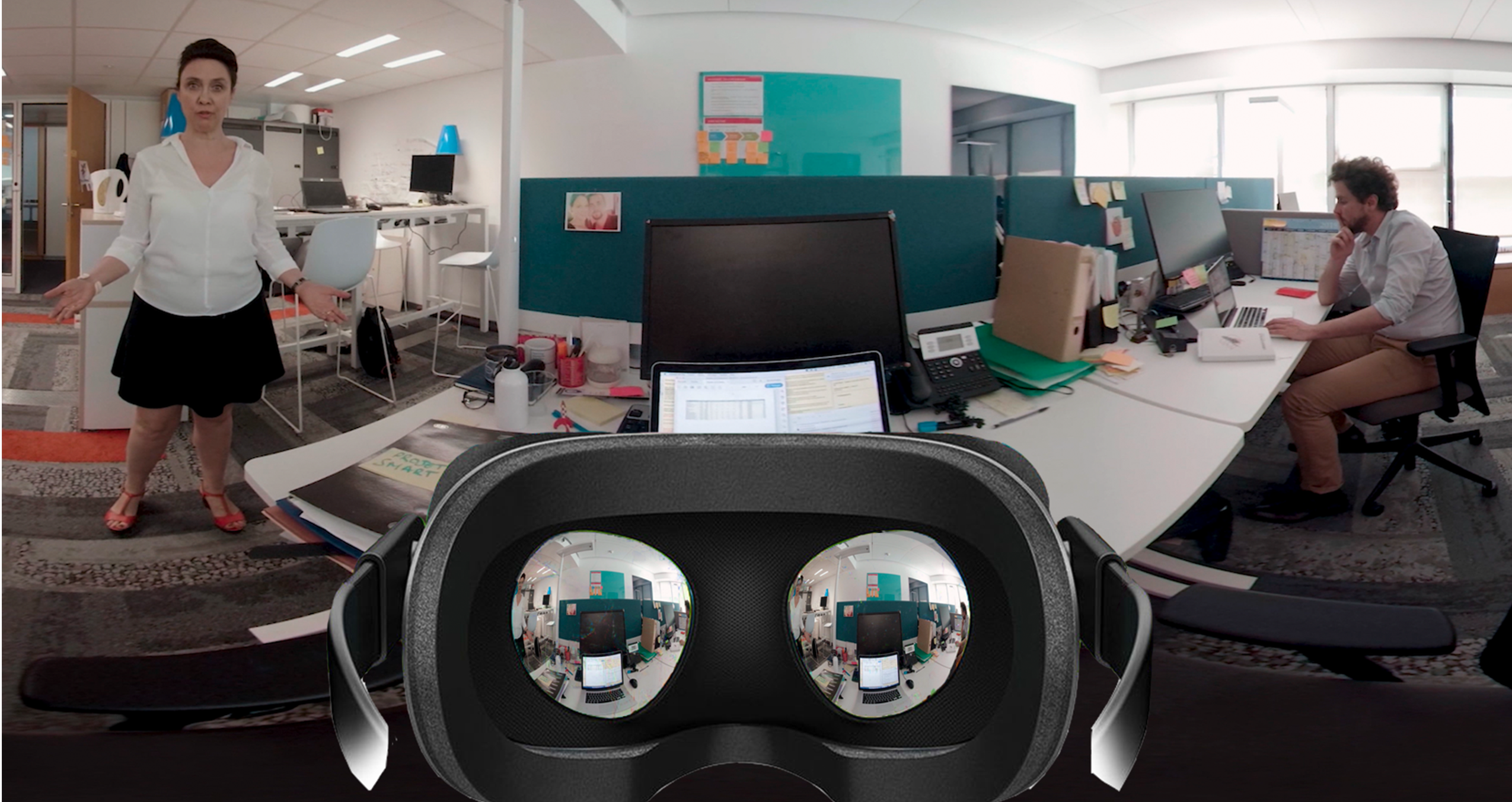
Crédits photos : Reverto
Since the birth of the #metoo movement, we hear more and more about sexism and new hashtags to denounce sexist actions emerge every week. Present in all levels of companies, prevention of sexism represents a real dilemma. Training everyone costs a lot of money, but so as not training and make a scandale. “It’s a waste of time“, “it doesn’t happen in our company“, “that’s alright, it’s just for fun“… Many collaborators drag their heels when we talk about sexism awarness in companies. What if virtual reality was the answer to all these problems?
What is sexism?
Few people really know how to define sexism and that’s normal, the notion of sexist behaviour has been defined by the Labour Code since 2015 only. The article L. 1142-2-1 of the Labour Code says: “No one shall be subjected to sexist conduct, defined as any behaviour related to the sex of a person that has the purpose or effect of violating his or her dignity or of creating an intimidating, hostile, degrading, humiliating or offensive environment.“
Does it still seem vague to you? Let’s take a look at it!
Sexism most often manifests itself in the form of:
- Familiar questions and remarks on the physique. Example: “Nice skirt, you should wear it for our customer meeting, you will have better sales performances”, “Marc should go to the gym, he is a real sissy”, “Hello beautiful”.
- Jokes about women/men and degrading situations. Example: “you’re angry today, do you have your period?“
- Situations of exclusion.
- Gender and skills stereotypes. Example: “We’re still not going to put Sarah in charge of the information systems department, we need a bit of testosterone to manage the Geeks.“
Today, 8 out of 10 women are victims of sexism at work. Only 18% believe that their company is taking action against such behaviour.
How can virtual reality help?
The company Reverto develops virtual reality solutions to fight against stereotypes at work. Rather that explaining what is a sexist behaviour, it puts you in the shoes of Zoe, a young executive in a company. This experience is completed by an interactif module in VR to look back at the situations experienced by analysing them, explain the law and the sanctions, give you the keys to act and collect data on the situations experienced in your company. In 15 minutes, you have a comprehensive tool for raising awareness of sexist behaviour.
How do I know if it’s efficient?
From Stanford to Google, via University Lyon 2, many studies have emerged on the impact of virtual reality on empathy and learning. The major advantage with topics like sexism is that it creates a “trompe l’oeil” for the brain. It interprets the situations viewed as true and will record them in your emotional experience and therefore your long-term memory. 1 year after living this VR experience, participants had retained 80% of the information. Moreover, 60% were able to recognize and react to sexism behaviours.
The big + of VR: it’s affordable and flexible
No more need to spend €1,200 per day to raise awareness of sexism among 20 employees on a face-to-face basis. Thanks to very easy to use and affordable equipment (on average €320), you can raise awareness among your employees at your own pace at a price ranging from €1 to €10 per employee per year. The whole company can thus benefit from training that is both effective and innovative.

